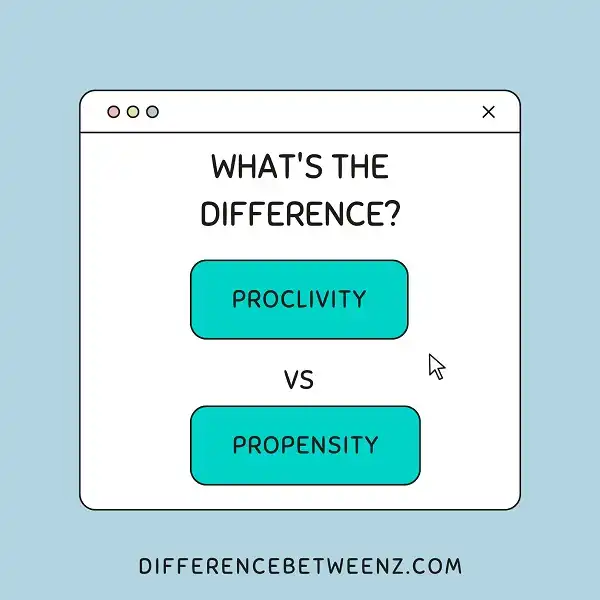There are many English words that are often confused with one another. Two such words are proclivity and propensity. Though they share some similarities, there are key differences between the two words. Let’s take a closer look at each word and explore how they differ.
What is Proclivity?
- Proclivity is defined as a natural inclination or predisposition towards something. In other words, it’s the tendency to do something or to be attracted to something. Proclivity can be used to describe both positive and negative inclinations.
- For example, someone might have a proclivity for violence, meaning they’re more inclined than others to act violently. Alternatively, someone might have a proclivity for helping others, meaning they’re more likely to help someone in need.
- Proclivity is often used in psychology to refer to an individual’s innate tendencies or disposition towards certain behaviors. However, it’s important to note that Proclivity isn’t the same as a certainty – just because someone has a proclivity towards something doesn’t mean they will definitely do it. Proclivity is simply a predisposition or inclination that may or may not result in actual behavior.
What is Propensity?
Propensity is a word that is often used in the field of statistics. It refers to the likelihood that something will happen. Propensity can be used to describe both positive and negative outcomes. For example, someone might say that a person has a high propensity for success.
- This means that the person is more likely than others to achieve success. On the other hand, someone might say that a person has a high propensity for failure. This means that the person is more likely than others to fail.
- Propensity is usually determined by looking at past behavior. For example, if a person has a history of succeeding in school, they are said to have a high propensity for success in school. Propensity can also be affected by other factors, such as intelligence or ability.
- However, Propensity is not always accurate. Just because someone has a high propensity for something does not mean that they will definitely achieve it. Propensity is only one factor to consider when predicting behavior.
Differences between Proclivity and Propensity
- Proclivity and propensity are often used interchangeably, but there is a subtle difference between the two words. Proclivity is more of an inherent tendency, whereas propensity is a predisposition or inclination towards something.
- Proclivity is often used to describe someone’s natural inclination towards certain behaviors, whereas propensity can be used to describe both positive and negative inclinations.
- For example, someone might have a proclivity for violence, meaning that they have a tendency to act violently. Alternatively, someone might have a propensity for making friends easily, meaning that they find it easy to make friends. In summary, proclivity refers to an inherent tendency, while propensity refers to an inclination or predisposition.
Conclusion
Although proclivity and propensity are often used interchangeably, there is a distinction between the two terms. Proclivity refers to an innate or natural inclination, while propensity refers to a tendency that can be learned or acquired. Marketers should be aware of these distinctions when developing marketing campaigns, as using the wrong term could lead to inaccurate assumptions about customers’ behavior.


